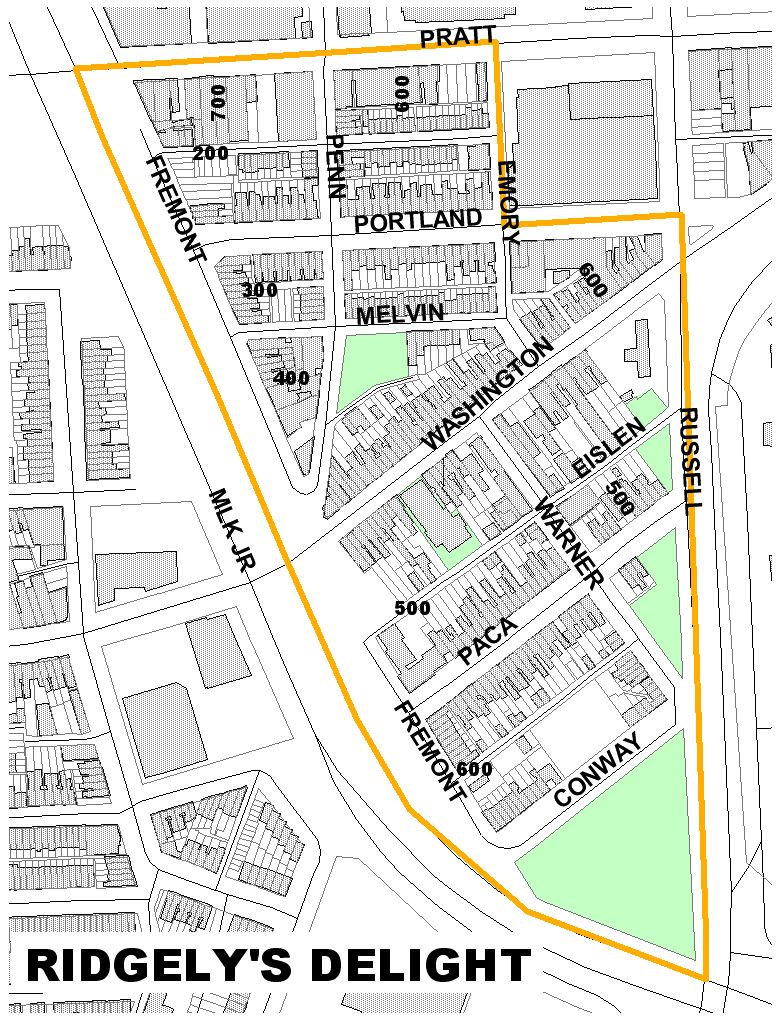Ridgley's Delight
Baltimore City Historic District Ordinance 1175 10/19/79
National Register of Historic Places 6/8/80
Certified Historic District for Tax Incentives (NR)
Description
 The Ridgely's Delight Historic District is a wedge shaped residential neighborhood just south of the University of Maryland downtown campus. It is generally bounded by Pratt Street, Russell Street, and Harbor City Boulevard. Located at the convergence of a diagonal and horizontal street grid, the area features an irregular street pattern. The rowhouses of Ridgely's Delight are primarily traditional Baltimore rowhouses. Most have flat facades with ornamentation only to emphasize doors, windows, and rooflines. The earliest houses have gabled roofs and dormers. Later houses often feature bracketed cornices.
The Ridgely's Delight Historic District is a wedge shaped residential neighborhood just south of the University of Maryland downtown campus. It is generally bounded by Pratt Street, Russell Street, and Harbor City Boulevard. Located at the convergence of a diagonal and horizontal street grid, the area features an irregular street pattern. The rowhouses of Ridgely's Delight are primarily traditional Baltimore rowhouses. Most have flat facades with ornamentation only to emphasize doors, windows, and rooflines. The earliest houses have gabled roofs and dormers. Later houses often feature bracketed cornices.
The residences are both two and three stories high and range in size from near-mansions to alley housing. Among the earliest houses are those set back from the street and a single surviving frame house on Melvin Drive. Many of the buildings on Washington Boulevard feature commercial storefronts, and a few industrial buildings are extant within the boundaries of the district.
Significance
Ridgely's Delight is architecturally significant in that it embodies excellent examples of traditional rowhouse architecture and is historically significant for the role of its residents in shaping Baltimore history. It is exemplary of the manner in which Baltimore neighborhoods have risen and developed, both socially and architecturally, covering a span of time equal to any Baltimore residential neighborhood. The make-up of the community has reflected the character of nearby nineteenth century employment centers, such as the University of Maryland Hospital, the B&O Railroad Yards, and Bartlett and Hayward Ironworks.
Ridgely's Delight has always been a socially and economically mixed neighborhood with both blue collar employees of local industries and professionals, such as the doctors and dentists employed at the University of Maryland's medical facilities. The district's residential structures represent the first phase of development for Baltimore's rowhouses, as well as later versions for working, middle and upper class residents. The unusual street pattern of Ridgely's Delight produces an in intimate human scale, fine vistas and irregular building sites and structures.